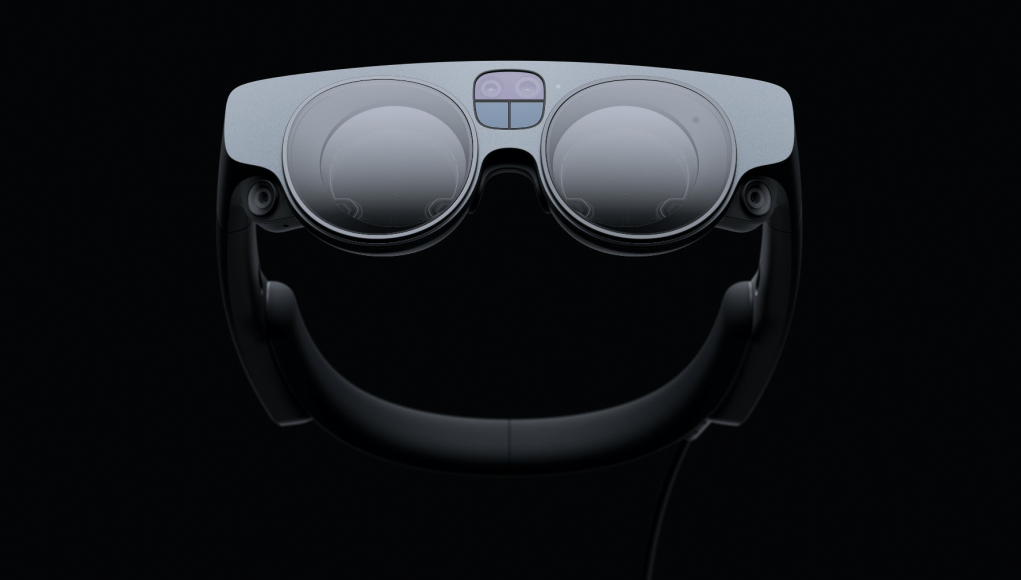Controller
The Magic Leap 2 controller offers 6DOF tracking based on computer-vision, according to Curtis, and purportedly enables “tracking outside the FOV of the display even behind the user.”
It isn’t clear if this means there’s some additional tech being used to track outside of the camera range, or if they’re just leaning on IMUs to estimate the position until the controller comes back into view (similar to what we see with headsets like Quest). ML1 used a novel magnetic approach to controller tracking, but it seems they’ve ditched that on ML2.
As for buttons, the single controller has a touchpad, trigger, and bumpers, as well as back & home buttons.
Embracing Android
Another major change for Magic Leap 2 is the move from the company’s own Lumin OS to Android.
While Lumin OS was based, in-part, on Android, Magic Leap had custom-built much of the underlying piping for Magic Leap 1. For Magic Leap 2, it seems the company is leaning more heavily on Android, apparently in an effort to make the headset easier to scale in large organizations; Curtis’ presentation specifically notes that ML2 can be “easily integrated with” Active Directory, a widely used tool for managing user permissions within businesses.
It isn’t clear if this change means that Magic Leap 2 will be able to support native Android applications, but that would certainly be a smart move. Doing so would allow enterprises to more easily adapt their existing workflows to the headset by deploying field applications on the headset, like barcode scanners and support manuals, instead of needing to port everything to run on Lumin OS.
Magic Leap 2 Release Date & Price Still Unknown
We still don’t have a price or release date for Magic Leap 2, but with the company steadily sharing more detailed info it seems there’s a good chance it could come in the first half of 2022.







